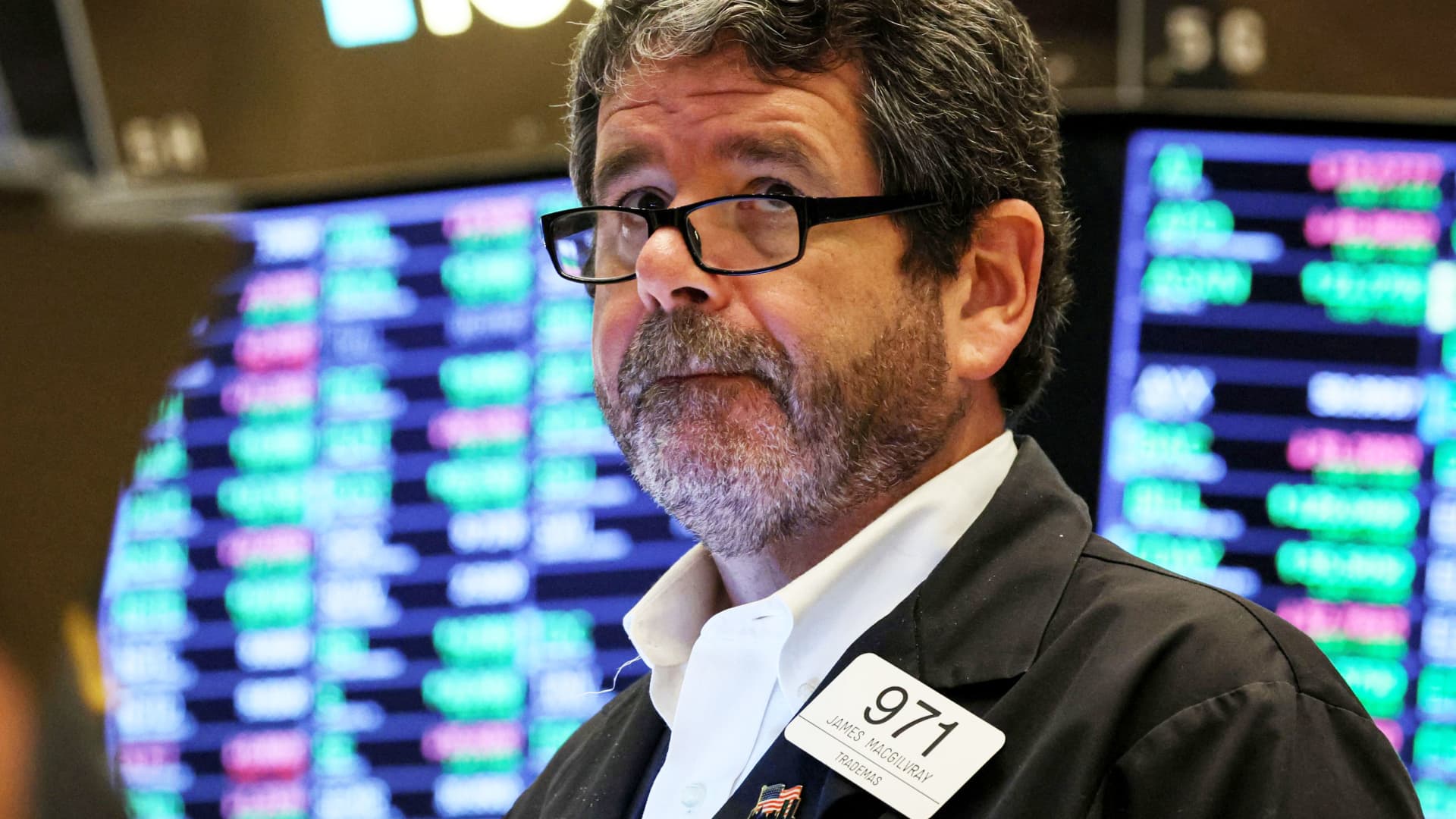
Even with the market seemingly finding new depths each day, now is probably not a good time to bet on the Federal Reserve to ride in and save the day as it has in the past. The much-celebrated “Fed put,” or the point where U.S. central bankers turn the levers of monetary policy to reverse a sharp market decline, does not appear to be in sight. With policymakers laser-focused on tackling inflation , the notion that they would pause rate hikes or start cutting, or even alter the gradual rundown of their balance sheet, seems remote despite the major averages meeting the widely held definition of a bear market. “There may well be someplace where the Fed says they’ve turned the screws too hard. But, it’s going to have to be something more exogenous,” said Art Hogan, chief market strategist at B. Riley Wealth Management. “If in fact there is a Fed put, it’s certainly got a strike price that’s much lower than where we are now.” Markets briefly took solace Tuesday morning following remarks from Chicago Fed President Charles Evans , who expressed some concern about the pace of Fed rate hikes that have totaled 3 percentage points in 2022. However, Evans is a reliable dove on policy, a nonvoter on the rate-setting Federal Open Market Committee, and is leaving his position in early 2023. So it’s not clear how many others share his view on a committee where the balance of the members sees benchmark rates rising at least another percentage point before year-end. The optimism from Evans’ comments quickly faded, however, with the major averages giving back their earlier gains on Tuesday and the S & P 500 reaching a new bear market low. Differing signals “Clearly the markets turned around and are calling his bluff,” said Lindsey Bell, chief markets and money strategist at Ally. “The Fed obviously wants to rectify their credibility, and they’ve done that by becoming extremely hawkish,” Bell added. “You’re starting to see actual results from that policy that we’ve been living through.” Indeed, the Fed’s stern inflation line has begun to show up most prevalently in the stock market, where the S & P 500 has tumbled more than 23% this year. However, other areas of the economy have held up rather well, though many show the central bank has a lot of work to do before it can declare victory. The Fed has had only limited success in slowing price increases, and a resilient labor market is pointing to continued inflation pressures. That has hardened the position of Fed Chair Jerome Powell and his colleagues, who played down inflation signals in 2021 and have had to play catch-up this year. “His legacy is on the line, given how late they were to recognize that inflation was far more entrenched,” said Quincy Krosby, chief global strategist at LPL Financial. “His legacy is on the line for misreading the economic backdrop, misreading the tea leaves.” The result has been a Fed that is tightening policy more aggressively than it has done in at least 30 years, posing threats to economic and financial stability. A ‘wake-up call’ An indicator that Bank of America used to gauge stress in the system has reached its highest reading ever, sending what its strategists say is a “wake-up call that the Fed put is nowhere near.” Still, market fear indicators such as the Cboe Volatility Index show a fairly complacent investing public, at least compared to the potential for significantly more downside. “Defensive positioning and Pavlovian-conditioning that upside is a bigger risk, have likely prevented investors from pricing in the loss of the [Fed] put,” Abhinandan Deb, equity-linked analyst at Bank of America, said in a client note. “However, the risk in our view is of a Mar-20 or Oct-08 style panic where CBs feel compelled to step in but are prevented by their inflation mandate from protecting markets in the way they have for the last 35 years.” Some strategists say, though, that the worst may be over for the market — even if there is some more damage ahead. Bell said she sees signs of inflation abating and would be a buyer should the S & P 500 fall to 3,200, or about 12.4% from Monday’s close. For his part, B. Riley’s Hogan said investors should keep three things in mind: In a typical recession, the drawdown is 30%-32%, so the market already has priced a lot of that in. Second, investors who want some immediate relief can turn to Treasurys — where yields are up sharply — but should otherwise stick to long-term strategies. Third, he thinks investors should “look back and see what typically happens in a garden-variety recession to markets and know that we’re following that template pretty closely.” And for those investors still hoping for a Fed put? LPL’s Krosby said that while rate cuts are unlikely, the Fed could ease up on its “quantitative tightening” program in which it is allowing up to $95 billion a month in bond proceeds to roll off its balance sheet. While the central bank generally favors using interest rates as the primary tool of monetary policy, it has been aggressive with its balance sheet in the past, particularly in times of turmoil. “If it looks like something is going to break, [Powell] can pause the quantitative tightening without looking like he’s giving up,” Krosby said. “For the market that would be seen as kind of a hybrid pivot. Historically, the market does not start its climb higher until the last hike is in. But we live in a different time.”
